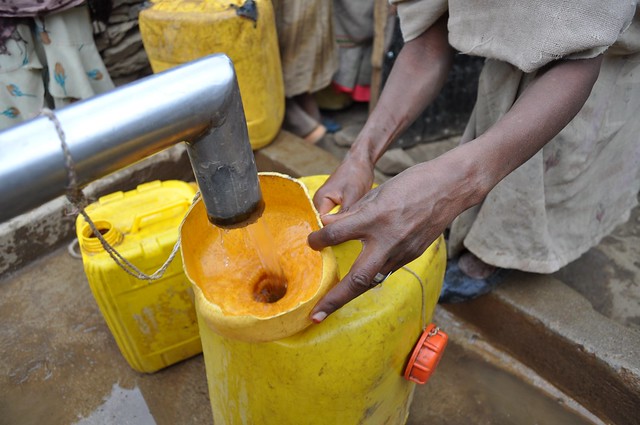Four Technological Innovations to Reduce Poverty
 Technology has the ability to change the way the world works and assist people currently living in poverty. Developing countries are often plagued by issues in sanitation as well as energy and medicine shortages that can hinder their economic security. Listed below are 4 new technological innovations that have the potential to reduce the effects of these issues and reduce poverty.
Technology has the ability to change the way the world works and assist people currently living in poverty. Developing countries are often plagued by issues in sanitation as well as energy and medicine shortages that can hinder their economic security. Listed below are 4 new technological innovations that have the potential to reduce the effects of these issues and reduce poverty.
4 Technological Innovations That Can Reduce Poverty
- Sewage-free sanitation systems: There are roughly 2.6 billion people in the world without access to proper sanitation infrastructure. Some of the countries most affected by poverty, including India, Kenya and Pakistan, have millions of people living without proper sanitation systems. Without these systems, human waste is improperly disposed of into lakes and rivers, which can lead to health problems in the local population. Issues resulting from improper sanitation kill an estimated 1.4 million children each year. Researchers at Duke University, the University of Florida and Biomass Controls have been developing an energy efficient toilet that does not require a sewer system to operate. These toilets look like ordinary toilets. As of now, several different prototypes have been developed. One prototype, developed at the University of Florida, is able to filter out pollutants. Another prototype, developed by Biomass Controls, is able to heat waste and transform it into a carbon-rich material that can be used as fertilizer.
- Advanced fusion and fission reactors: New forms of nuclear power are expected to become available in the coming decades that will be both safer and cheaper than current nuclear power sources. Approximately 1.3 billion people live without access to energy. Energy poverty is unique because it is both a cause and a consequence of economic poverty. New nuclear designs that could help alleviate the issue of energy poverty include generation IV nuclear fission reactors, small modular reactors and fission reactors. Two companies, Terrestrial Energy and Terraworks, are hoping to use generation IV fission designs for grid supply in the 2020s. Small modular reactors are cost effective and reduce safety and environmental risks. While fission reactors seem to be a long way off, there has been some progress and they will be less controversial for public use since they create less long term waste and are safer than current nuclear sources.
- Blood testing for premature birth: Premature birth is a healthcare problem that disproportionately affects the developing world, particularly countries in Asia and Africa. Premature birth is linked to numerous health problems in newborns including increased risk of cerebral palsy, learning disabilities and respiratory illnesses. Recent blood tests are now analyzing RNA instead of DNA, and scientists have identified seven genes linked to premature birth. This discovery of the genes related to premature birth could lead to future treatments for the problem.
- New desalination tech: Water scarcity is a huge problem that is linked to poverty. It is estimated that one in nine people (844 million) lack proper access to safe, clean water. Over the past few decades, scientists have developed a new method called desalination to turn saltwater into consumable fresh water. This process, however, is very expensive and requires a high amount of energy. New technology uses reverse osmosis for desalination. This process is not new, but instead of being powered by a battery, the new technology can be powered by solar energy, which is significantly more cost-efficient.
New technology has the potential to address many of the issues relating to poverty. Issues including energy, health and sanitation have long afflicted those in poverty and have hindered efforts to alleviate economic impoverishment. New technological innovations that are being developed today have the potential to be vital tools for reducing economic poverty in the future.
-Randall Costa
Photo: Flickr
